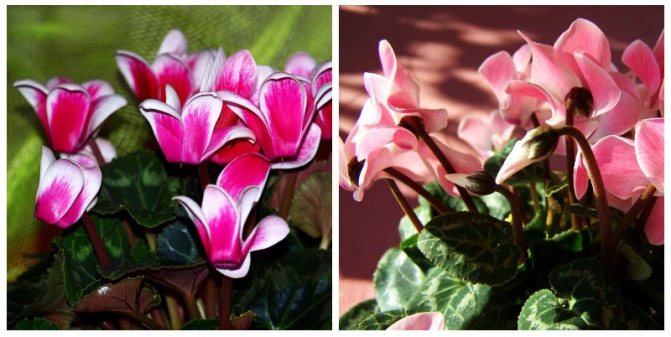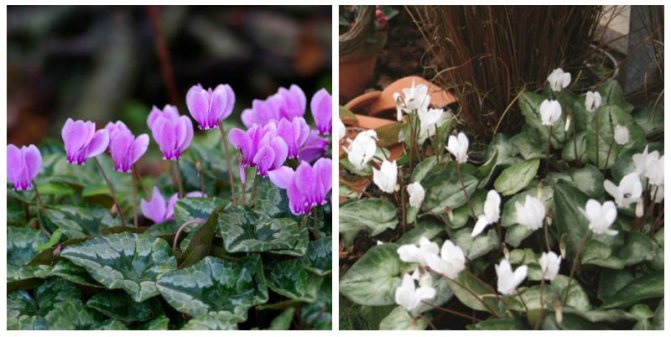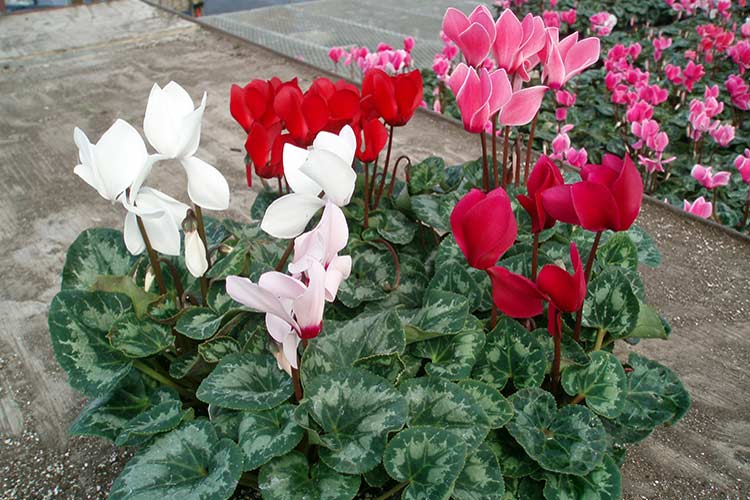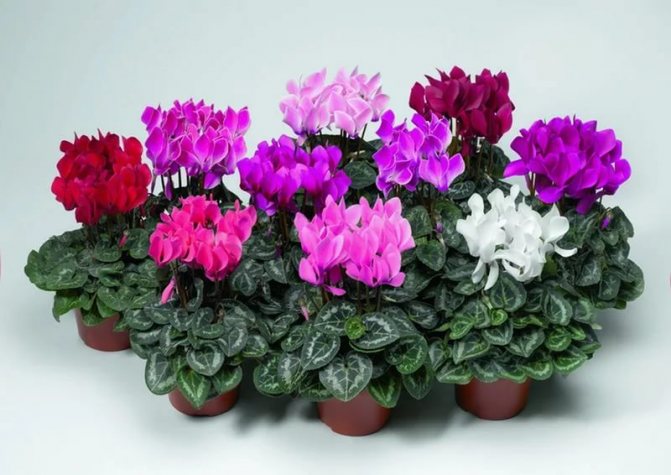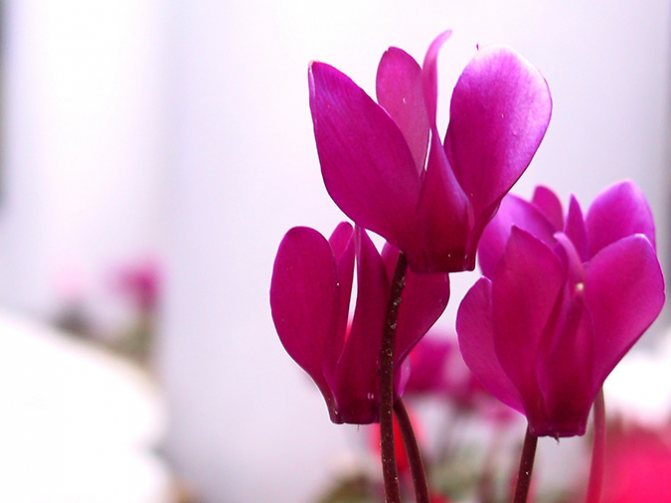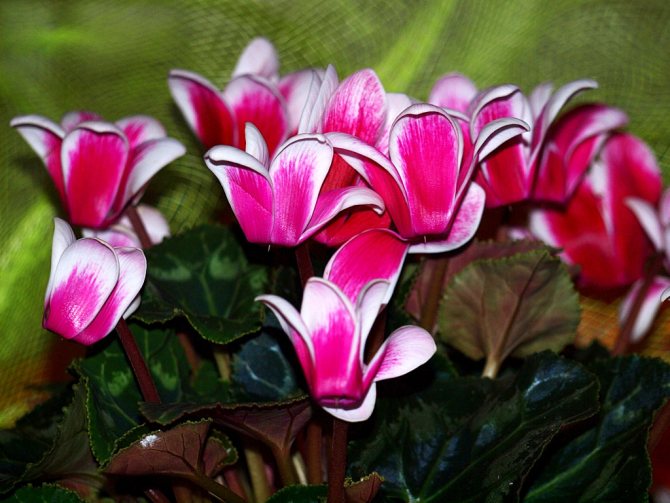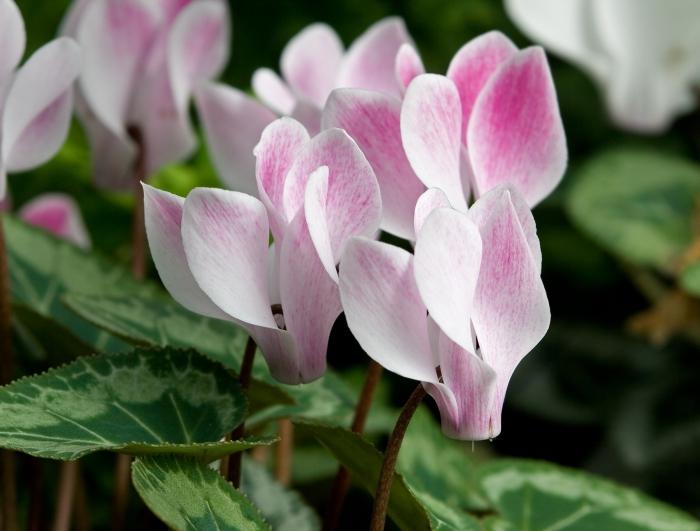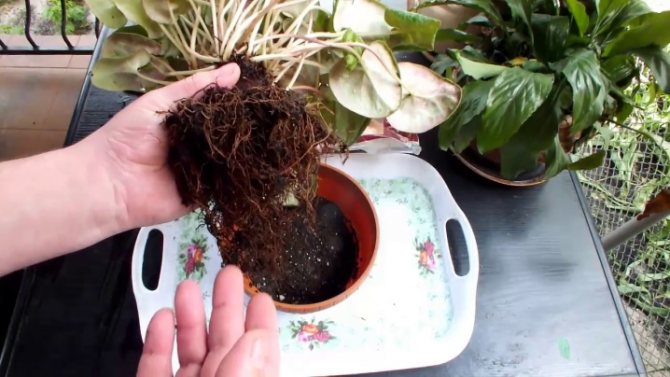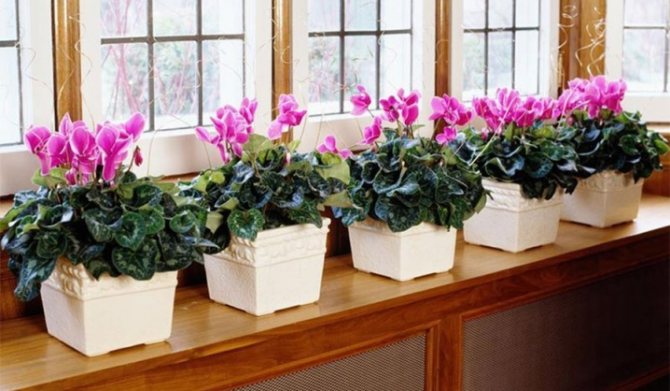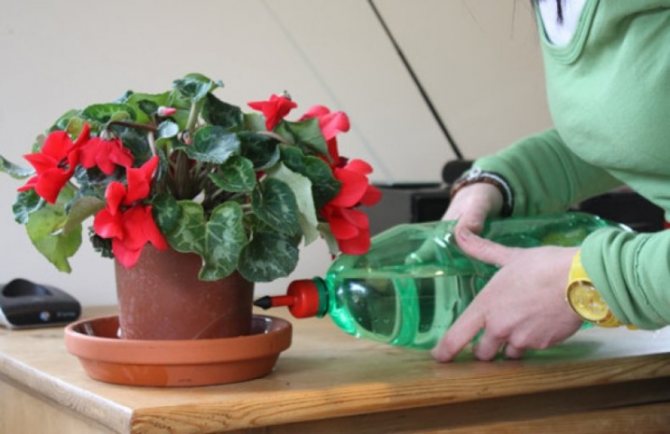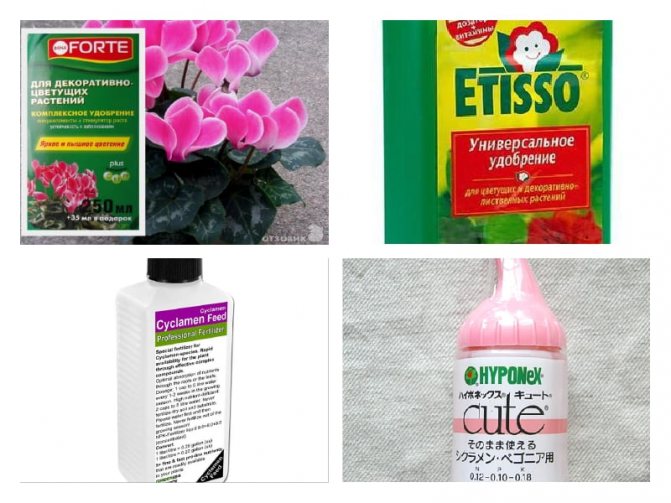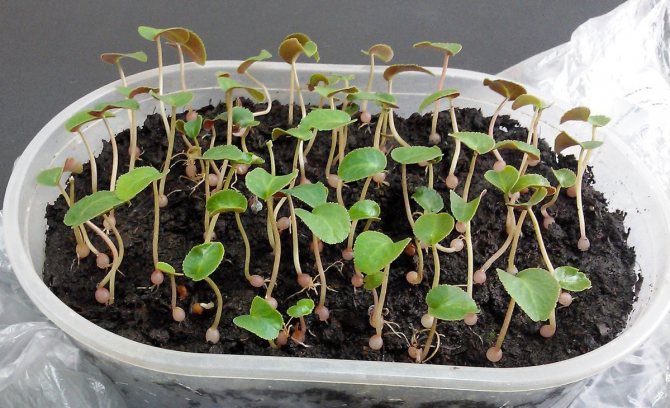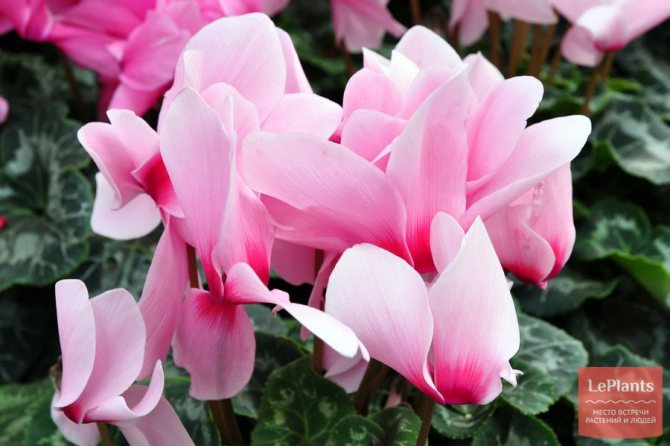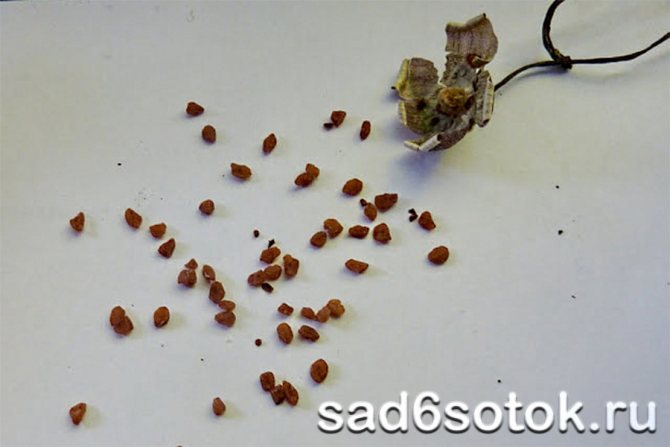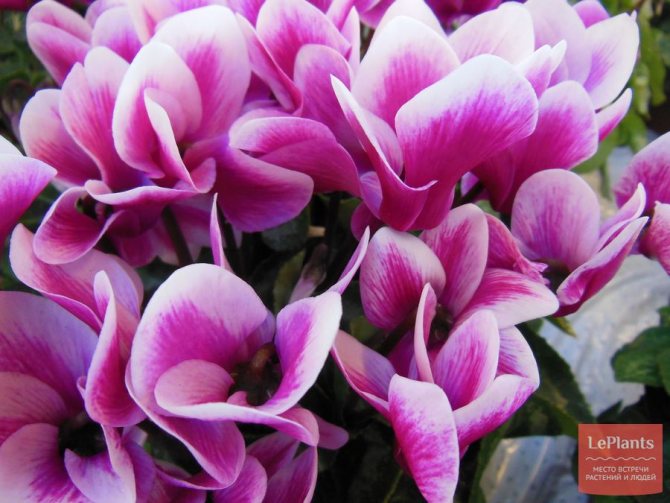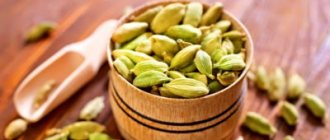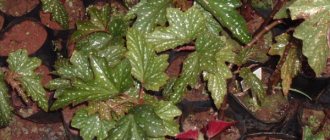Cyclamens: types and features
The genus of cyclamens includes about 50 species, 20 of them are grown at home. The tuber of a plant is a round, flattened bulb with a growing point. Depending on the species, it grows up to 10-15 cm in diameter. Basal leaves with long petioles. Their distinctive feature is a gray or silver pattern on the outside of the sheet plate. The flowers have elongated strong peduncles. Petals 2-3 cm long are slightly bent back. The color scheme is varied, it includes all shades of pink, red, lilac, white. The number of buds on one adult plant reaches 60 pieces.
Information. Cyclamen root juice is used to treat sinusitis.
There are two main types of cyclamen used for growing at home.
Persian cyclamen
The homeland of the Persian species is Asia Minor, northern Africa and the Mediterranean. The perennial is distinguished by its large flower diameter and high peduncles. Core-shaped leaves can reach 14 cm. They are dark green in color, covered with a silver marble pattern. Breeders have created many varieties of Persian cyclamen. It gained such popularity due to its long flowering and magnificent decorative appearance.
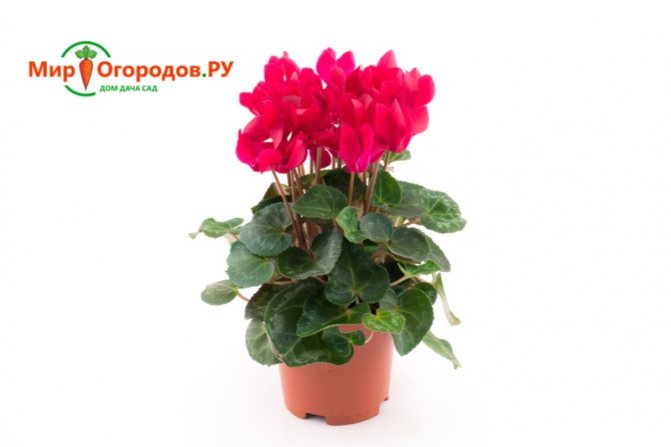
The flowering period lasts from autumn to early spring. The height of the peduncles is 30 cm, flowers with a diameter of 5 cm are formed on them. The tips of the petals are pointed or fringed, bent back. Then the plant needs rest and rest. In May-June, it sheds its leaves and freezes for several months. At this time, watering is reduced to a minimum. Withered peduncles and leaves are removed. In August, the plant is transplanted into a new pot and watered regularly. The tuber grows up to 15 cm, its root system is located in the lower part. When transplanting, the tuber is not completely buried, 1/3 should be above the soil surface. Propagated by seeds only.
Alpine violet or European cyclamen
The European type of cyclamen is called alpine violet for its delicate scent and small bright flowers. In natural conditions, they are found in the center of Europe, Crimea, Italy. The tuber of an adult perennial has a diameter of 10 cm. The roots germinate from its entire surface, therefore, unlike the Persian species, the tuber is completely buried in the ground. The basal leathery leaves are covered with a silvery pattern on the outside along the edge. Their underside and petioles have a purple tint.
Thin strong peduncles grow up to 15 cm, flowers 2-3 cm in diameter. The flowering time falls on the warm season - from spring to autumn. The range of colors from pink to purple. After flowering, a fruit is formed - a box with seeds. The plant is not demanding on the conditions of detention. It does not shed leaves for the winter, does not have a clear dormant period. Reproduction of the European cyclamen is possible by dividing the tuber and seeds.
How to care for cyclamen at home after purchase


Cyclamen has several other names, for example, duckweed, alpine violet, Solomon's flower. The plant itself belongs to the family of perennial herbaceous plants. Many people like it because of its large exotic flowers. Where this flower first appeared, botanists still do not know, as well as its age, by default it is called a "prehistoric" plant.Has a very wide spread, geography from the Mediterranean Sea and Spain in the western part of the globe, to Iran in the eastern part. In the southern part of our planet, it is distributed up to Africa, for example, it is found in Somalia.
A very interesting story why one of the names of this flower is Solomon's flower. Solomon was without a crown for a long time, as he could not find a suitable shape for the main headdress. Quite by accident, he caught sight of a cyclamen, without hesitating further, Solomon ordered to cast a golden crown, taking the shape of a flower as a basis.
Plant care rules
In order for a plant to please with a hat of bright colors, it is necessary to provide it with comfortable conditions. How to care for cyclamen at home? Beginners in the maintenance of this plant should pay attention to several main points:
- priming;
- room temperature;
- watering;
- lighting;
- top dressing.
Watering Secrets
One of the first questions when buying a plant is how to properly water the cyclamen. Improper agricultural practices are a common cause of plant death. Cyclamen is recommended to be watered through a tray. This method avoids moisture ingress on the tuber and the growing point. But it is worth considering the hardness of the water. A large amount of salt has a negative effect on the root system. Hard water must be defended for several days or filtered. When watering through a sump, the water is left to soak into the ground for an hour. Then the remaining liquid is drained. The procedure is best carried out in the morning, during the day the soil dries up slightly.
Advice. A solution of succinic acid (1 tablet per 1 liter of water) helps to dissolve and wash out excess salts from the soil. Use once a month. Instead of succinic acid, you can take aspirin.
Watering the plants from above is permissible, moisture is gently poured along the edge of the pot. Cyclamen loves coolness, so some growers replace watering with ice cubes or snow. This procedure is advisable in the summer heat. The recommended water temperature for irrigation is 2-3 ° lower than the temperature in the room.
Pot and soil selection
You can buy substrate for planting a plant at a store. A universal soil for flowers, a primer for violets or geraniums is suitable. Adding sand and perlite will help to make it looser and more moisture-consuming. The soil for cyclamen should be slightly acidic or neutral. You can cook it yourself. Required:
- leaf land - 3 parts;
- humus - 1 part;
- peat - 1 part;
- sand - 1 part.
The soil taken for the mixture on the street must be disinfected - ignited in the microwave or spilled with a solution of potassium permanganate. Drainage must be done at the bottom of the pot. Expanded clay, small pebbles, gravel are taken as material. And the foam balls, which are recommended for other indoor plants, are not suitable in this case.
For cyclamen, plastic and ceramic pots with drainage holes are used. It is better to choose a structure designed for bottom irrigation. You should not look for a large container, for adult plants the optimal diameter is 14-15 cm, and for young plants it should be less. A pot for cyclamen should be chosen according to the size of its tuber. It should be 2-3 cm from the edge of the bulb to the edge of the pot. In this case, the indoor flower develops correctly and blooms on time. A large capacity provokes high humidity and root rot.
Conditions of detention
All types of cyclamen love coolness, a comfortable temperature in the summer period is 18-22 °, and in winter - 12-14 °. Higher temperatures should be avoided, especially for purchased plants. Otherwise, they may fall into a dormant state. Flowers need diffused light, direct rays are destructive. The room needs to be ventilated frequently, but cyclamens should not be exposed to drafts.
The west and east sides are recommended for flower placement. They love moisture, with increased dry air, the leaves are carefully sprayed.But with the appearance of buds, they switch to another way to increase the humidity. The pot is placed in a pallet with wet moss or expanded clay. For top dressing, liquid complex fertilizers are recommended, which are applied along with irrigation. The plant needs additional nutrition during the active growing season and budding.
Attention. For cyclamens, use half the dosage recommended by fertilizer manufacturers.
The frequency of top dressing is once every two to four weeks. When choosing a drug, you should pay attention to the nitrogen content. An excessive amount of this element is contraindicated in bulbous plants. The cyclamen flower does not need special care after flowering. It is enough to remove dried stalks and leaves, and place the tuber in a dark place. Watering is very rare, top dressing is excluded.
Reproduction methods
All types of cyclamens reproduce by seeds. They can be bought or grown at home. Blooming cyclamens are pollinated with a brush and wait for the seed pods to ripen. The European species can be propagated by dividing the tuber.
Tuber division
The cyclamen tuber is dried before dividing. Cutting into pieces, make sure that there is a root and a bud with leaves everywhere. It is not worth doing a lot of parts. The sections are treated with brilliant green or activated carbon, then they are given time to dry (2-3 days). The parts are planted in moist soil. For germination, the pot is placed in a bright place and regularly watered. The survival rate is not 100%, some may rot.
Growing from seeds
Before planting in the ground, I soak the seeds for a day in a solution of water and "Zircon" (4 drops per 0.5 liters of water). For growing seedlings, light loose soil is taken, consisting in equal parts of peat, leafy earth, vermiculite and sand. A container with holes in the bottom is taken under the ground. A layer of expanded clay 2-3 cm high is poured into it. Prepared soil is poured on top (6-7 cm). The soil is generously moistened. Seeds are laid out on a surface two cm apart, sprinkled with a small layer of earth. The container is covered with polyethylene to create a constant temperature and humidity.
The container is placed in a cool, dark place. Waiting for seedlings is delayed for 1-3 months. During this period, the soil must be watered and ventilated. The first to appear on the surface is a pinkish-purple nodule. When two leaves grow, the seedlings dive and settle in separate pots. After 1-2 weeks, they are fed with a complex fertilizer (reducing the concentration by 2 times). The flowering of cyclamens will have to wait for more than a year. But plants grown at home will be stronger and healthier than purchased ones.
Pitfalls of purchased cyclamen
Purchased cyclamen is handled with care. Before entering the house, the plant experienced several stresses due to transplantation and a change in the usual climate. The conditions of his detention in a greenhouse are different from those at home. The flower needs to be helped to get used to the new life. A cyclamen transplant after purchase is recommended after 1-2 months. Vigorous peduncles and leaves after a day in the apartment may wither. Do not rush to water or feed them.
The plant adapts to the new temperature and humidity. Choose a cool but bright place for it. Check the degree of moistening of the earthen coma with a dry stick. Pour through the pallet as needed. Fertilizers will not be needed for several months. The fact is that store specimens are over-fed for abundant flowering. Spraying with water with "Zircon" will help the leaves to recover. It is a universal growth regulator that increases disease resistance and root formation activity.
When is a transplant needed?
Indoor flowers are often sold in shipping soil that is not intended for long-term use.It is poor in nutrients, but saturated with a lot of fertilizers. This keeps the plant for a certain time, and then it begins to turn yellow and wither. Transplantation from such soil is desirable before the end of the adaptation period. It is necessary to change the soil in the following situations:
- noticed pests in the ground;
- poor quality of the substrate;
- decay of plant roots.
Division into groups
- Miniature. Plants belonging to the first group are decorated with large flowers, reaching more than 4 centimeters in size. Sometimes even the flowers of this group have fragrant smells. For comfortable plant growth, a pot diameter of about 6-10 cm is required.
- Midi. Cyclamens in this group have medium-sized flowers and prefer pots with a diameter of 10-13 cm.
- Maxi. They are also called large-flowered or standard. A more suitable pot volume for them is 13-20 cm.
Read here Lantana - growing a variegated flower and tips for the care and maintenance of indoor plant species (135 photos)


You can buy a cyclamen flower in specialized stores in September. It is appreciated for the fact that it does not stop abundant flowering throughout the winter.


At the beginning of the spring period, the plant stops growing, the cyclamen turns yellow, and retires. With proper care, the flower will delight with flowering for many years.
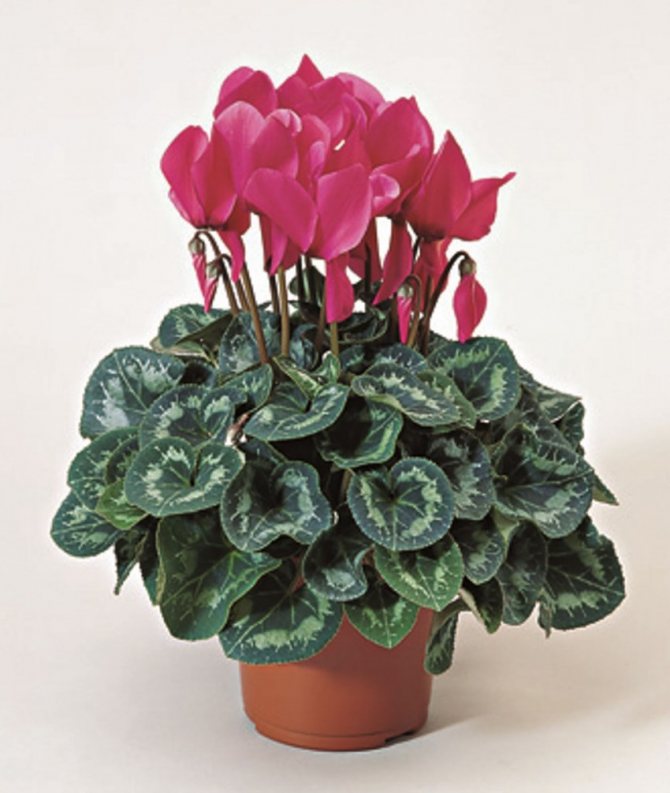

Transplanting flowers
A planned transplant of cyclamen at home occurs every 2-3 years. The time depends on the type of plant - the European is transplanted in the spring, and the Persian in the fall. This is the period before the start of the active growing season. The procedure is performed by the transshipment method. The plant is placed in a new pot with a lump of earth entwined with roots. In a more spacious container, only add the required amount of soil. Don't forget the drainage layer.
When transplanting purchased flowers, it is recommended to thoroughly clean the roots of old soil. An earthen mixture for bulbous plants ("Tulip", "Florin") is poured into a new pot. The soil should be slightly acidic. A pot with a diameter of 7-8 cm is enough for a young cyclamen, for an older one (3-5 years old) - 14-15 cm.
When planting, the tuber of the European cyclamen is completely covered with soil, and only 2/3 of the Persian. In a high-quality substrate, top dressing will not be required for 1-2 months.
What it is?
This is a plant of the primrose family. It charms with its large, bright and exotic flowers.
Other names
Cyclamen has many names, here are the most common ones:
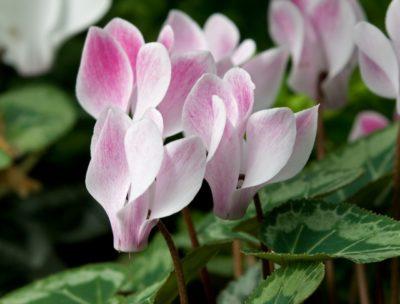

Maiden's ear... The flower received this name from Stefan Zweig. This writer in his novel "Impatience of the Heart" compared the shape of a flower with a gentle girl's ear.- Alpine violets... This is the name of the wild species that grow in Central Europe.
- Pork bread, pork potatoes, earthy bread... This name of the plant is due to the fact that it is actively used for feeding pigs.
- Ground apple or radish... This name is associated with the rounded shape of the tuber.
- Winter gdula... The peculiarity of cyclamen is the ability to bloom in the cold season.
- Bogoroditsin grass... Cyclamen effectively treats many diseases.
- Dryakhva-grass or Georgian dryakva... The herb is effective for reduced immunity, nervous disorders, rheumatism, diseases of the upper respiratory tract. All this is achieved due to the saponin and glycoside, which are contained in the cyclamen tubers. Hence the name "dryakva" came from.

